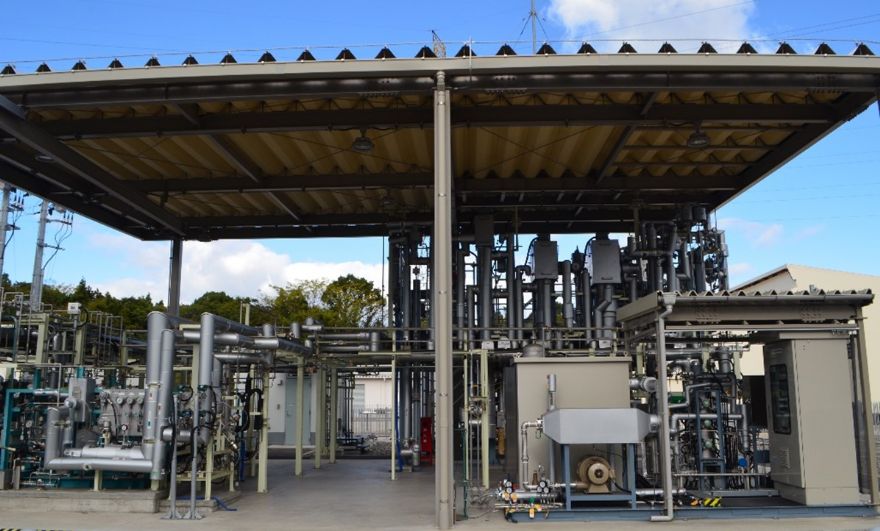 Osaka University’s Graduate School of Engineering Science
Osaka University’s Graduate School of Engineering Science,
Kawasaki Heavy Industries Ltd, and
Mitsui Chemicals Inc, recently announced that they have ‘successfully conducted’ demonstration tests of methanol and para-xylene synthesis using CO
2 as a feedstock. The tests, which were conducted as part of the ‘Research of Selective Synthesis Technology of Chemical Products for Carbon Recycling’, has been selected for inclusion in the ‘Development of Technologies for Carbon Recycling and Next-Generation Thermal Power Generation’ project being run by Japan’s ‘New Energy and Industrial Technology Development Organisation’ (NEDO).
NEDO said: “Efforts to combat global warming are progressing, with the aim of achieving a carbon-neutral society by 2050. Against that backdrop, this project seeks to develop technology for the effective use of CO
2 emitted by factories and the like. The project partners recently carried out a test in which they produced para-xylene using methanol synthesised from CO
2 and hydrogen; these were undertaken at NEDO’s R&D and ‘Demonstration Base for Carbon Recycling’ at Osaki-Kamijima, Hiroshima.
“This project has seen the establishment of the component technologies, culminating in the demonstration of a technology for synthesising para-xylene from methanol that has itself been synthesised from CO
2. Compared with production methods that use petroleum-based resources as feedstocks, the para-xylene obtained in this project affords a substantial reduction in CO
2 emissions.
The trio say that in addition to conventional applications as an ingredient in chemical production, methanol is now beginning to be used in ships, and more as a fuel with a lower environmental impact. “Para-xylene, meanwhile, is a raw material used in purified terephthalic acid, and thus is also widely used in the manufacture of polyester resins for clothing and plastic bottles. Replacing conventional petroleum-based resources with CO
2 gathered via direct air capture — as well as via factory emissions — and converting it into methanol and para-xylene will lead to both lower emissions and the fixation of CO
2.”